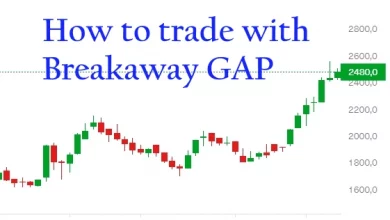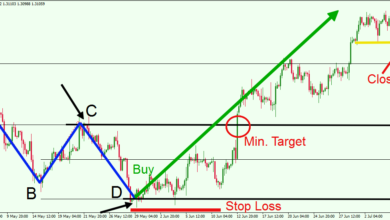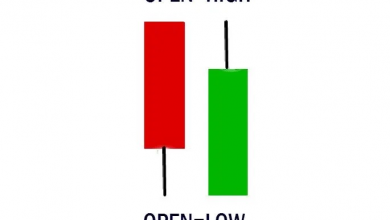Rules for Picking Stocks When Intraday Trading

Which stocks work well for intraday trading? Here are professional recommendations for making regular profits in both trending and ranging markets.
There are many interesting shares and stocks to trade intraday, so any investor can figure out optimal assets to make money on. Before you, dear reader, plunge into the world of trading, the initial step is to sort out the best shares for intraday. When an exchanging instrument has been defined (one stock, numerous stocks, or derivative assets, such as ETFs, and so on), the following step is to figure out the optimal intraday trading strategies.
In this detailed guide, you will discover the aspects that matter for the choice of the best intraday stocks.
Contents
1. Consider liquidity
The best stocks for intraday are liquid shares since they will in general have high volume numbers. That means bigger amounts to be bought and sold without altogether affecting the cost. Since intraday trading techniques are reliant upon speed and exact planning, a serious level of intraday stocks volume makes getting into and out of deals simpler. Profundity is essential since it shows you how much liquidity a stock has at different value levels above or beneath the current market bid and deal.
2. Choose medium to high volatility
Trading always requires some value movements to bring in cash. Investors should pick pretty volatile intraday stocks to buy, either in dollar terms or rate terms. These two channels frequently deliver various outcomes. Stocks that in a general move by 3% or more each day provide reliable enormous intraday moves to trade on. The equivalent is valid for stocks that will in a general move by more than $1.50 each day.
3. Trace followers
While there are many individuals who work in contrarian plays, most brokers search for values that move in connection with their sector and indices – this is the best intraday strategy so far. This implies that, when the sector or the indices tick up, the traders’ stock cost increases. This is essential assuming the trader needs to exchange the strongest or the weakest assets each day. On the off chance that a merchant selects one intraday trading strategy for a single asset every day, it is recommended to focus on that one asset; there is no compelling reason to figure out whether it is associated with whatever else.
4. Passage and exit strategies
You might have picked the best stock on the planet, however, benefitting from it will depend on the explicit techniques used. How to do intraday trading efficiently? While there are various intraday methodologies, the essential thing is to adhere to certain rules. By searching for certain intraday exchanging signals, you are bound to succeed.
5. Exchange only with the current intraday trend
The market consistently moves in waves, and one of the best intraday tips is to catch the wave. Traders should be able to reap benefits from ups and downs. During an uptrend, center around taking long positions. During a downtrend, center around taking short positions. Intraday patterns don’t go on endlessly, yet a couple of exchanges (or once in a while more) can be made before an inversion happens. At the point when the prevailing pattern shifts, start exchanging with the recent trend.
Defining the trade pattern can be a very challenging aspect. Trendlines give a basic and helpful entry and stop-loss intraday strategy.
More trendlines can be distinguished while trading in real-time to see the shifting levels of each pattern. Involving more trendlines may give more signals and may likewise give more prominent knowledge about the changing financial sector elements and particular intraday trading stocks.
6. Exchange strong stocks in uptrend, weak stocks in a downtrend
Wonder which share to buy today for intraday? To pick the best stocks, most dealers will find it useful to take a peek at values or ETFs that have from moderate to high connection with the S&P 500 or NASDAQ indices. Then, at that point, separate those stocks that are moderately feeble or solid contrasted with the index. This sets many opportunities for intraday trading, in light of the fact that a solid stock may climb by 2% when the index climbs by 1%. There is a greater profit chance in the stock that moves even more.
When the indices and market futures are moving higher, traders should opt to purchase stocks that are rising more powerfully than the features. At the point when the futures pull back, a strong stock won’t pull back so much (or may not pull back by any means). These are the stocks to trade during uptrends since they will in general lead the market higher and, consequently, give more profit-making opportunities.
When the indices and market futures are dropping, it tends to be beneficial to short sell stocks that drop more than the market. At the point when the futures move higher inside the downtrend, a powerless stock won’t go up so much (or won’t climb at all). Weak stocks give more benefits possible when the market is falling.
The stocks and ETFs that are more grounded or more fragile than the market might change every day, albeit certain sectors might be generally solid or frail for quite a long time at a time. In case you will purchase something, pick the stock that is stronger than others.
The same applies to shorts trading. Short traders ought to distinguish stocks or ETFs that are weaker than others. Along these lines, when costs fall, you are probably going to be in stocks or ETF‘s that will fall the most, in this manner expanding the profit opportunities of the exchange.
7. Stay patient and wait for the bounce back
Trendlines are basically a visual aide for defining where value waves will start and end. Accordingly, when choosing the best share for intraday, merchants can utilize a trendline for early entry into the next value wave toward the pattern.
When entering a long position, purchase after the value drops down toward the trendline and afterward moves back higher. To define a vertical trendline, a value low and afterward a greater cost low is required. The line is drawn connecting these two moments and afterward reaches out to the right side.
Short selling in a downtrend would be comparable when you’re considering the intraday stocks to buy today. You should delay until the value climbs to the descending inclining trendline. Then, at that point, when the stock starts to drop down, you utilize this as a trading sign to make your entrance.
If you can plan intraday timing and wait long enough, these two long trades allow making a profit with relatively low risk. The purchase is made near the stop-loss level, which would be entered a couple of cents underneath the trendline or the latest price low made only before the entry. As referenced above, patterns don’t last forever, so there will be losing exchanges, as well. Yet, while general profits are made, even with the losses, the strategy works well.
8. Take regular profits
Investors have restricted opportunities to catch profits with stocks for intraday and should, subsequently, invest as little energy as conceivable in deals that devour money or keep moving off the planned course.
Here are two basic rules that can be utilized to take benefits when exchanging with patterns.
- In an upswing or long position, take profits at or a little bit over the previous value high in the lasting trend.
- In a downtrend or short position, take profits at or slightly underneath the previous value low in the latest trend.
This video explains how to pick assets that will generate you regular profits:
9. When the market stands still, don’t trade
Markets don’t always generate trends. During some periods, intraday patterns invert so frequently that a clear trend is difficult to trace. How to select stocks for intraday then? If no significant highs and lows are being made, ensure the intraday moves are significant enough for the expected profit to surpass the risks. For instance, if playing $0.10 per share, the stock or ETF ought to be adequately moving to give you no less than a $0.15 to $0.20 profit utilizing the rules above.
On the off chance that the cost is moving in a range (almost not changing), you can try the reach-bound exchanging technique. During a reach, your defined boundaries on a trading chart will be flat, not sharp or angled. Nonetheless, similar general ideas apply to any best stock for intraday. But when the value moves to the lower level region, reaches support, and afterward begins moving higher. Short sell when the value arrives at the upper even line, reaches resistance and begins to move lower once more.
There are two more intraday trading rules to remember. When purchasing, try to exit close to the highest point of the reach yet not directly at the top. While shorting, try to exit in the lower piece of the reach yet not directly at the bottom. The potential profit ought to be higher than the risk. Place a stop-loss just beneath the latest low preceding passage on a purchase signal, or simply over the latest high before the section on a short sign.
It may be challenging for some dealers to switch back and forth between trend and range intraday strategies. Along these lines, numerous traders select to do either. While following trends, pause trading when markets are ranging and focus on exchanging stocks or ETFs that are trending. At the point when you range trade, abstain from exchanging during trends and focus on exchanging stocks or ETFs that tend to range.
The conclusion
Recognizing the right shares for intraday exchanging includes distinguishing the current market pattern from the background information. Then, at that point, a dealer’s priority is to profit using this pattern. Certain elements (liquidity, fluctuations and correlation) display the best intraday exchanging stocks. But at the same time apply the right entry and exit strategies.
Studying trendlines and charts with value waves can help with this challenge. There are numerous approaches to trading, and none of them can work in 100% of cases. If the current conditions don’t provide the breeding ground for your growing profits, set aside your cash on intraday stocks for tomorrow.




